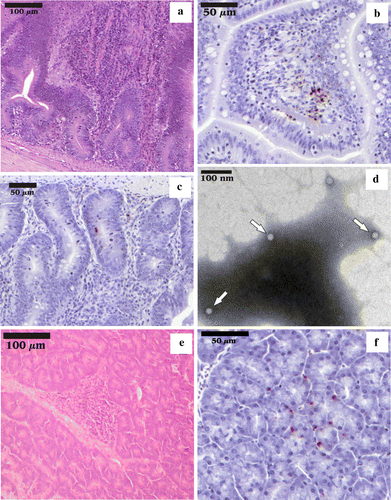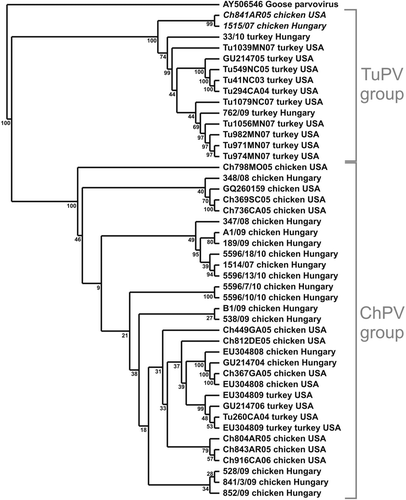Figures & data
Table 1. Details of flocks included in the present study and PCR results for viral pathogens known to be involved in ED.
Figure 1. 1a: Enteritis in the jejunum with distension of the crypts, increased number of mononuclear leukocytes in the lamina propria and a few granulocytes; haematoxylin and eosin. 1b: Indirect IHC, counterstained with Mayer's haematoxylin, positive nuclear staining in the inflammatory cells from the lamina propria of jejunum. 1c: Indirect IHC, counterstained with Mayer's haematoxylin, positive nuclear staining in the epithelial cells of the duodenal crypts. 1d: Transmission electron micrograph showing viral particles with size and morphology typical for the Parvoviridae family (arrows). 1e: Nodular pancreatitis with lymphocytes and histiocytes; haematoxylin and eosin. 1f: Indirect IHC, counterstained with Mayer's haematoxylin, positive staining in the exocrine pancreas.

Figure 2. Phylogenetic relationship of the investigated strains based on the nucleotide sequence of the examined region of the Hungarian ChPV and TuPV strains from the present study, the sequences retrieved from the GenBank (accession numbers indicated for each strain) and the American-origin sequences (no accession numbers available). Goose parvovirus strain HG5 was used as the outgroup.
